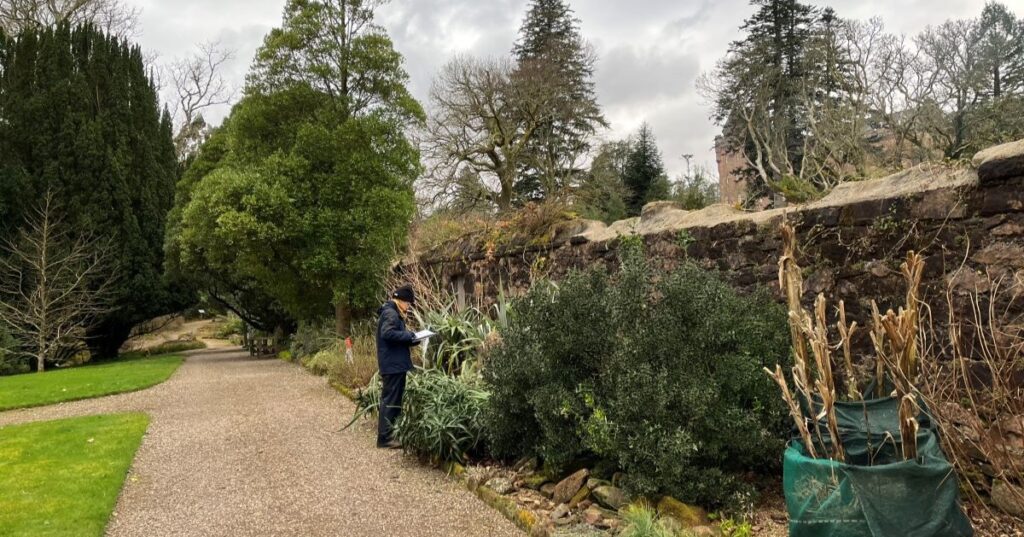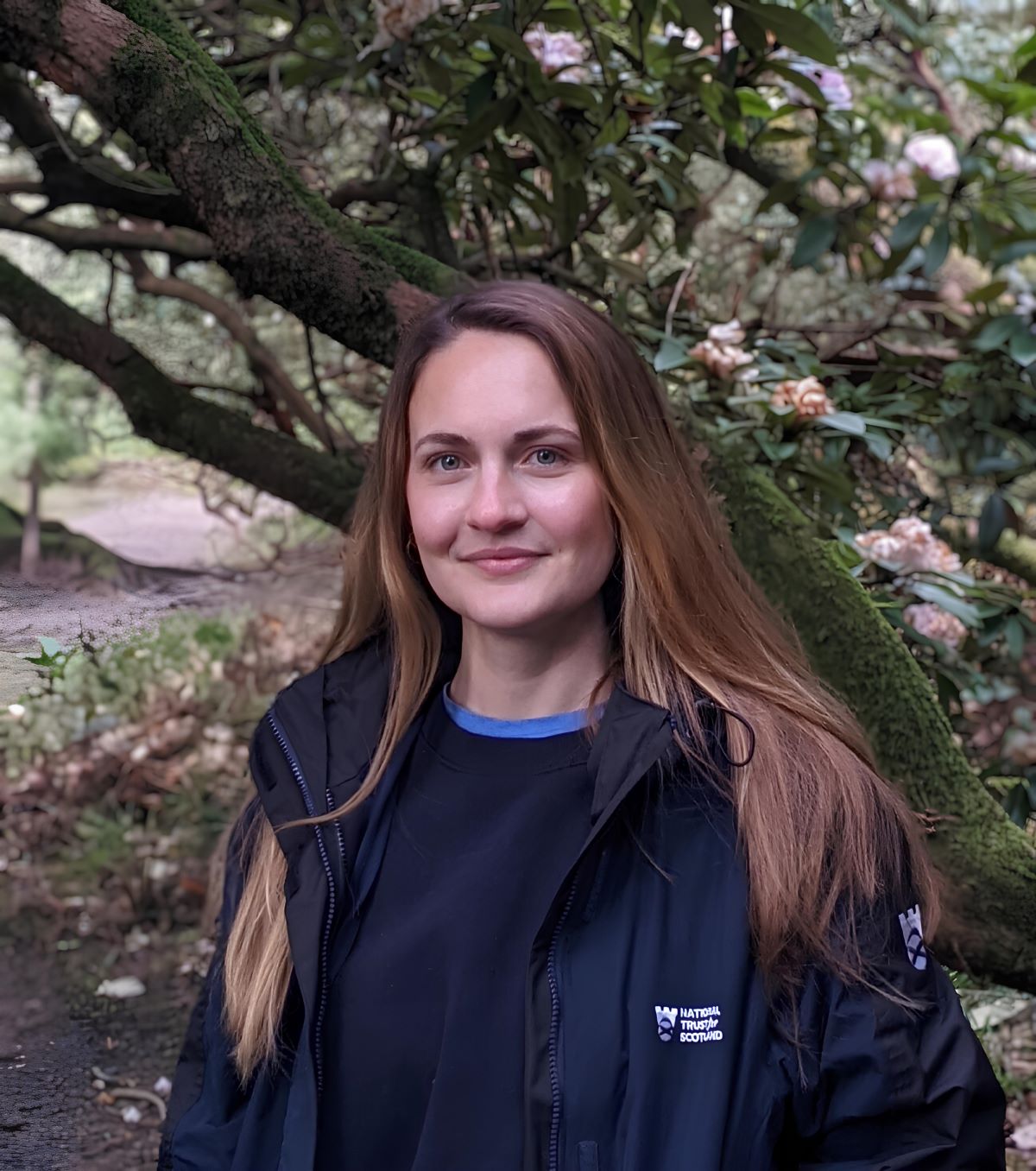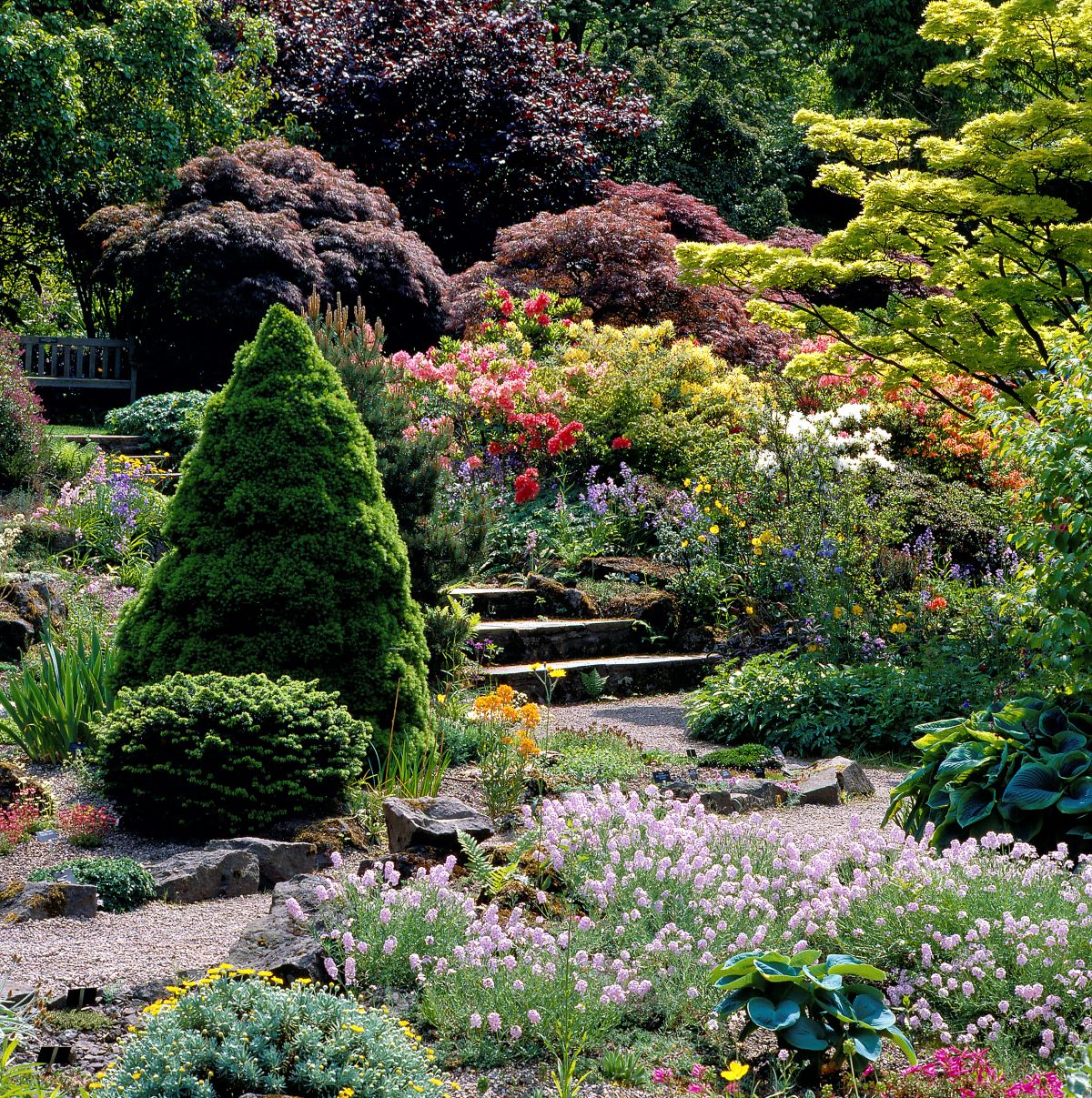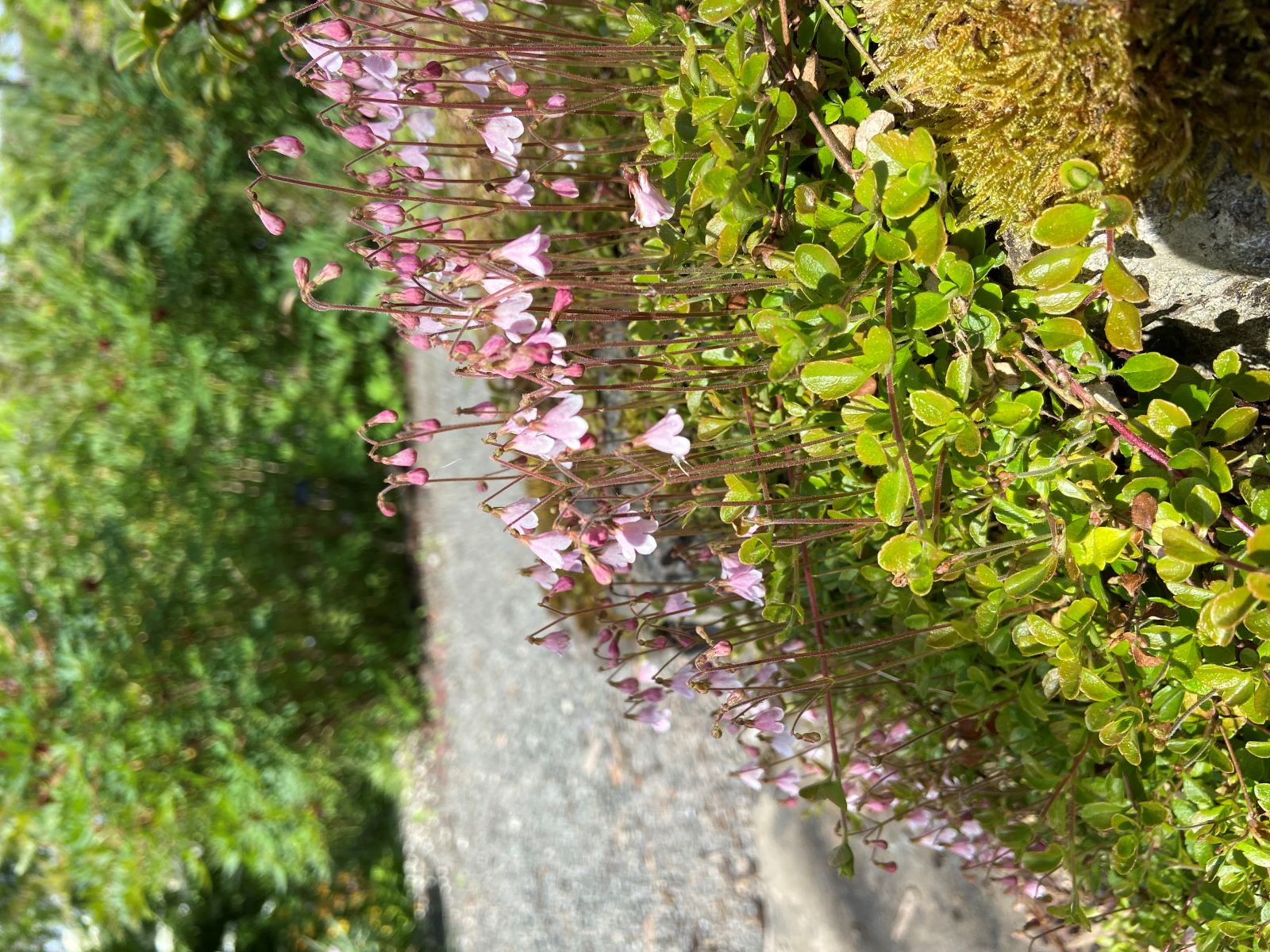
Life with The National Trust for Scotland: ‘I travel all over Scotland as a plant detective’
Inventory Officer on the PLANTS (Plant Listing at the National Trust for Scotland) project, Charlotte Bottone talks about surveying thousands of Scotland’s plants and what you can do in your own garden to help often forgotten about species.
I normally get to work between 8 and 8.30am. I start the day by planning which area of the garden to cover, then I head out with maps, a catalogue of any pre-existing plant records for the garden and my own recording sheets.
I love the variety of the job. Every day is different. The charity cares for and shares almost 40 major gardens and no two of them are the same. One week I might be surveying fruit trees in the orchard at Falkland Palace and the next week be exploring the rare plant collections at Inverewe Garden on the Northwest coast. I feel very lucky to have a job where I get to spend so much time outside, it keeps me fit and I love feeling connected to nature. I have always preferred being outdoors, every opportunity I get in my spare time I am out hiking, swimming or gardening.

Charlotte Bottone, plant detective.
The process of the plant detectives is quite systematic. For most gardens, we are aiming to survey all the key plants in that garden, sometimes thousands of them. Often a bit of detective work is required to figure out the species, cultivar or variety of a plant. I use reference books, historic records from the garden and current gardeners’ knowledge to help identify the plants. Occasionally we will uncover a plant we thought was lost, discover a Trust originating cultivar that is unique to that garden or find out a plant is much older than we thought. It is fascinating to uncover the stories behind the plants and connect them to the history of the gardens.
Standardising the plant records like this across the properties means we have complete and accurate records. It helps maintain our living collections and allows us to track their conservation.
I come across so many interesting plants. Last June I surveyed the plants at Branklyn Garden, in Perth, and it was really enjoyable. It is a relatively small garden but packed full of unusual specimens. A particular favourite of mine is Linnea borealis (commonly known as Twinflower), a ground cover plant that produces pink bell-shaped flowers. It is native to Scotland but sadly now endangered in the wild. There is a beautiful specimen in the rock garden at Branklyn.

Branklyn Garden, Perth. Credit: National Trust for Scotland

Linnea Borealis at NTS Branklyn Garden. Credit: Charlotte Bottone/National Trust for Scotland.
The Trust cares for over 100 properties, including 39 major gardens, and this project is undertaking audits in gardens in every corner of the country. I get to explore places I have never been before. I travel from the Scottish Borders to the Highlands and Islands – which is great fun.
When looking for plants, the time of year makes a big difference, it is much easier to confidently identify a plant that is in flower, so when February comes along, I focus on snowdrop collections and then March is daffodil season and so on. I get to experience the seasons through the plants I am working with.
The Scottish weather can be challenging. Some days I battle wind, rain and midges. I always go to work ready with waterproofs, warm clothes and a flask of tea to get me through the worst of the weather. But the flipside of that is that I also get to be outside when the sun is shining.
Plants are often forgotten about, but they are extremely important, they are the foundation of our ecosystem, an essential resource and an indicator of climate change. There are many things that amateur gardeners and families can all do in our own gardens; every little helps. One option is to grow more native plants in our own gardens. They provide habitats for animals, encourage biodiversity and store carbon. Another thing we can all do in our gardens is leave a bit of a ‘mess’, whether that’s letting the grass grow long to encourage wildflowers or leaving leaf litter and plant debris for small mammals and insects.
I normally finish up around the same time the gardens close for the day. Now that the days are getting longer, I love to sit out in my own garden of an evening, have a glass of wine and plan my weekend hiking adventures.
Read more from the Life With series here.
Subscribe to read the latest issue of Scottish Field.
TAGS

